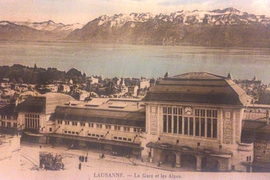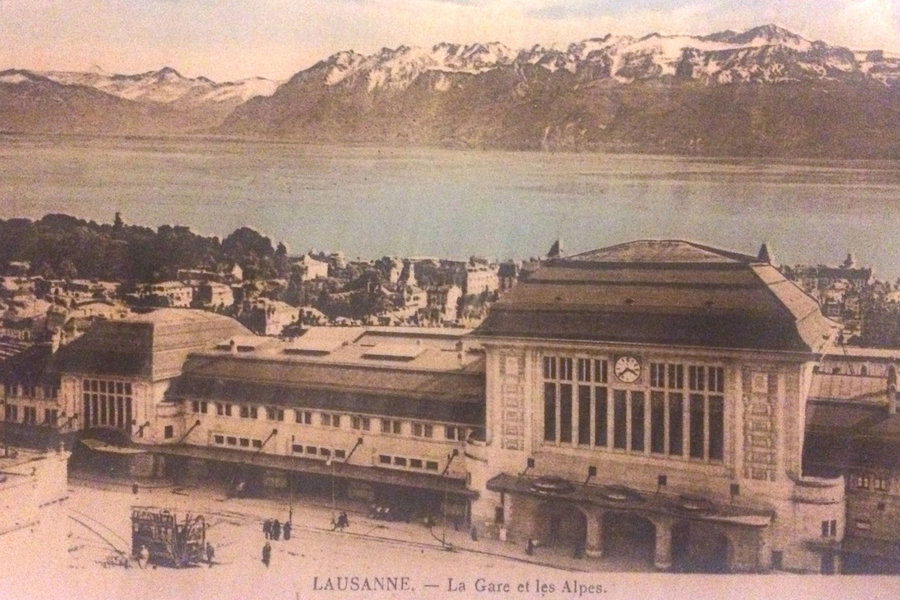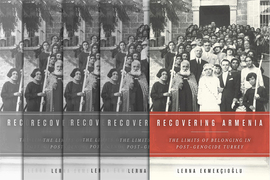As negotiations for the Treaty of Lausanne began in late 1922, the aim was to hammer out one last international settlement about territories and rights following the first world war, this time between the victorious Allied powers and the Ankara government that had just abolished the Ottoman sultanate and started governing what would soon become the Republic of Turkey. Those watching the conference closely included Armenian representatives who had survived the genocide led by Ottoman rulers in 1915-16, when hundreds of thousands of Armenians were killed.
At the conference, the Armenian delegation had one major aim: that Armenians be granted an autonomous region within Turkey, either in what is now eastern Turkey or northern Syria. They called this an Armenian National Home (ANH), an autonomous, demilitarized area within Turkish territory where Armenians could practice self-rule and express their culture and religion safely.
The negotiations did not produce what the Armenians wanted, however. Turkish leaders rebuffed Armenian demands, while the Allies were not heavily invested in the matter. The Treaty of Lausanne became known as the “birth certificate” of modern Turkey, while Turkey’s Armenian population became a minority group with mostly equal rights, but often facing discrimination in practice.
“The Treaty of Lausanne doesn’t mention Armenians even once,” says MIT historian Lerna Ekmekcioglu.
Now, in a newly published research article, Ekmekcioglu contends that the Treaty of Lausanne is an often-overlooked event of great historical significance for Armenians. As she writes, “the Treaty of Lausanne rendered the Armenian Genocide politically inconsequential.” There was no redress for Armenians, in the form of autonomy or any kind of restorative justice, and no accountability for the perpetrators.
That article, “Debates over an Armenian National Home at the Lausanne Conference and the Limits of Post-Genocide Co-Existence,” uses new archival research to reconstruct the dynamics of the treaty negotiations. As such, the research illuminates both Armenians’ struggles as well as the international community’s struggles to deliver consistent support for multiethnic, multireligious states.
“The issue broadly is how states govern people whose identities don’t fit with the historically dominant group’s identity,” says Ekmekcioglu, who is the McMillan-Stewart Associate Professor of History at MIT and director of MIT’s Program in Women’s and Gender Studies. “It’s an ongoing question. This is a very good case study for contemplating these questions. It’s also very relevant to this day because the Lausanne Treaty did not collapse.”
The paper appears as a chapter in the edited volume, “They All Made Peace — What Is Peace?: The 1923 Lausanne Treaty and the New Imperial Order,” published by Gingko and available in the US via the University of Chicago Press. It is edited by Jonathan Conlin, a historian at the University of Southampton, and Ozan Ozavci, an assistant professor at Utrecht University. The volume marks the 100th anniversary of the treaty being signed, which occurred on July 24, 1923. The book is part of a collective scholarly effort about the treaty, the “Lausanne Project,” whose website suggests the pact may be the “forgotten peace” of World War I.
Ekmekcioglu’s past work largely focuses on the lives of Armenians in the modern Turkish state. In her 2016 book, “Recovering Armenia: The Limits of Belonging in Post-Genocide Turkey,” published by Stanford University Press, she notes that immediately after World War I, Armenians were optimistic about their political prospects; Ekmekcioglu calls the time from 1918 to 1922 an “exceptional period,” as Armenians hoped to gain full rights they did not have under the Ottoman Empire.
However, the Treaty of Lausanne negotiations — held in Lausanne, Switzerland — brought an end to Armenian optimism. Perhaps that should have been predicted: In the few years after World War I ended, Turkish military forces defeated Allied-backed troops in skirmishing for control over some Turkish territory. That made the Treaty of Lausanne discussions highly unusual: The putative victors, the Allies, had just lost military battles to the side they were negotiating against.
“They have so much negotiating power that they get most of what they want,” Ekmekcioglu says, speaking of the incipient Turkish government of the time.
In that sense, 1922 was probably already too late for negotiations to deliver success for the Armenians. But as Ekmekcioglu details in the article, the Allies lacked not just military leverage, but perhaps moral standing. The Turkish press ran many stories about colonial misdeeds by the British and French, and even stories about the Ku Klux Klan in the U.S., all aimed at showing that the Allied powers had mistreated minority groups. To whatever extent there may have been Ottoman backing for a new Armenian settlement, that kind of coverage helped squelch it.
“One of the reasons they [the Allied side] didn’t have much standing in the eyes of the Turkish public is that they confused humanitarianism with colonialism,” Ekmekcioglu says. “They claimed specifically to have never treated any minorities badly in the empire. But Turkish newspapers were writing about that double standard of imperialism.”
The Treaty of Lausanne has perhaps been best known for having ratified a massive and compulsory population exchange in the 1920s between orthodox Greeks in Asia Minor and surrounding areas, and Muslims in Greece. Perhaps 2 million people were relocated, about three-quarters of them Greek. That exchange, which homogenized area populations, has often been regarded as an antedecdent to the partitioning of India and Pakistan in the late 1940s.
“This has important international legal law consequences because population transfer then becomes a potentially recognized solution to the existence of heterogeneity and population mixing,” Ekmekcioglu observes. “Other groups, in the future will take this as an example. It is a self-fulfilling prophecy.”
So, while the Treaty of Lausanne did guarantee certain rights for all populations, its inability to deliver a more thorough pluralism in political bodies may be a lasting part of its legacy. To be sure, the Armenian representatives at the Lausanne conference also wanted their own largely homogenized territory, too — although, as Ekmekcioglu notes in the paper, their extraordinary circumstances makes that fairly understandable.
And so, after suffering at the hands of the Ottomans, the Armenians then felt let down by the international community, another blow in short succession. Perhaps there were no easy answers at the time, but, Ekmekcioglu observes, we can still think through what the best alternatives might have been. Especially, she notes, in a world often still struggling to achieve stability and pluralism at once.
“To understand minorities in Turkey to this day, you have to understand the Treaty of Lausanne, and how it came to be,” Ekmekcioglu says. “It’s a great laboratory for comparing, and ideally coming up with an answer to, the issue of difference.”









